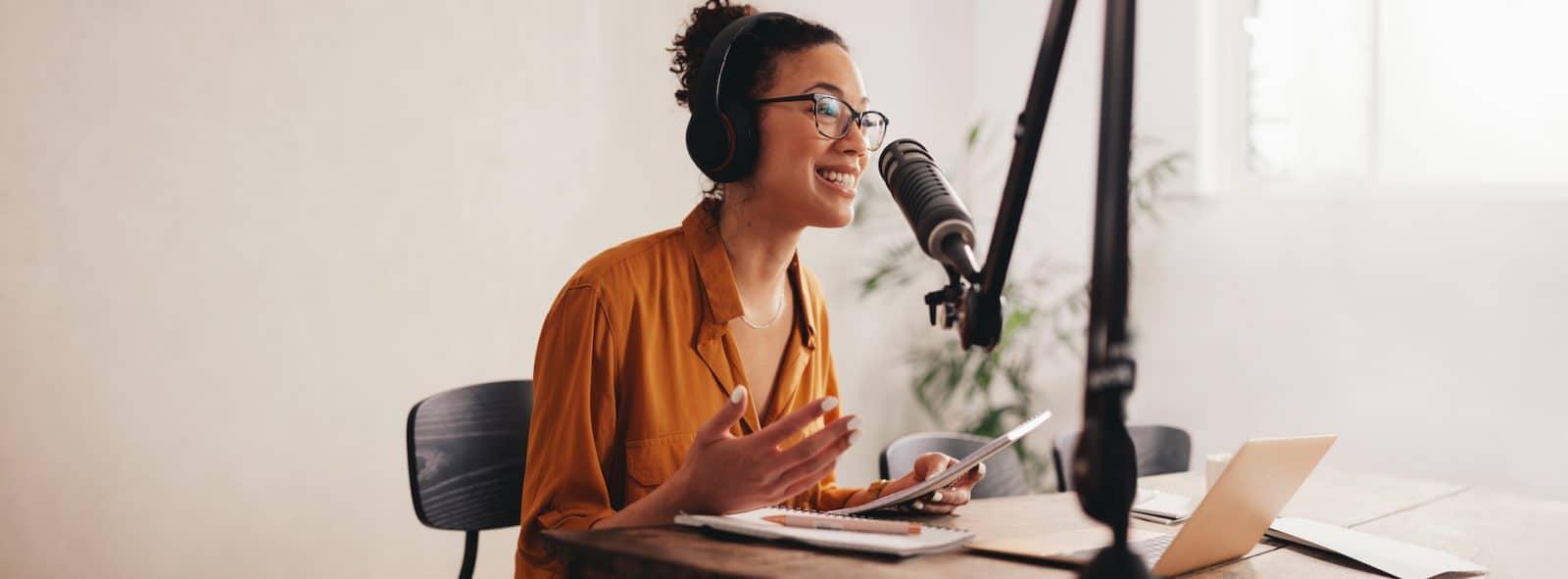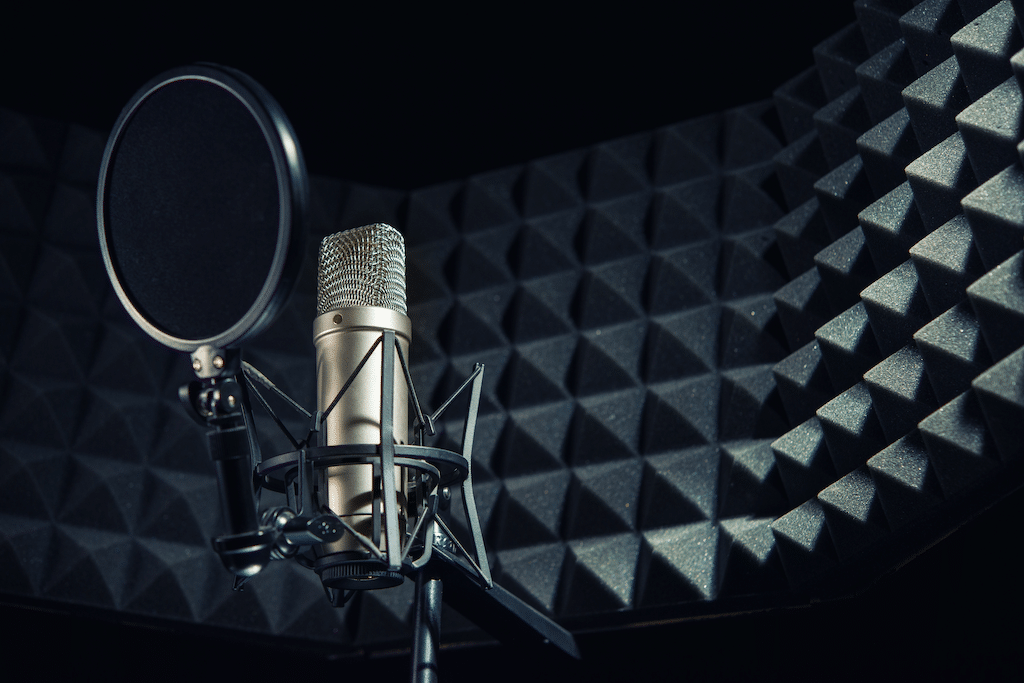No products in the cart.
How to Create Your Own Soundproofed Podcast Studio

28
Feb
In today’s growing digital world, more and more people are dabbling in content creation, influencing, podcasting and blogging. As podcasting increases in popularity, soundproofing your space is essential to creating content with quality sound.
Soundproofing is the process of using materials to keep sound from entering or leaving a particular space. When done correctly, soundproofing can effectively create the perfect quiet space to record your podcast audio.
With an intentional set-up, you can create your own podcast studio that will provide excellent audio quality during your time recording.
I love listening to a crisp and clear podcast episode when relaxing in my home or taking a drive and there is nothing worse than hearing the people talking in the episode drowned out by noises from their background or echoes because of their lack of a soundproofed room.
MORE: Household Items You Can Utilize for Soundproofing
Here are things you should consider when creating your own soundproofed podcasting studio:
What Type Of Surfaces Are In Your Space?
Are you going to record a podcast in a room with hard wood floors? Is your space carpeted? Is there glass windows or concrete walls? Are the walls, floors or ceilings thin, allowing noises to come from above or below you?
Surfaces play a huge role in the quality of sound that is produced and each can interfere with how sound is reflected and absorbed.
What is sound absorption?
Simply put, sound absorption refers to the ability of how materials and surfaces soak up sound. When sound enters a space, it bounces off each surface it touches. If an area or surface is soft or padded, sound can be absorbed into it.

Carpet, blankets and padded furniture are highly effective in absorbing sound, while hard surfaces like glass or drywall can cause sound to bounce off of surfaces creating an echo.
What is sound reflection?
Sound reflection is the process in which sound bounces of a surface to create an echo effect. When sound waves interact with solid surfaces, reverberations occur.
Hard surfaces like glass or drywall can cause sound to bounce off of surfaces creating an echo.
MORE: The Ultimate guide to soundproofing a room
What External Noises Are Contributing To Your Space?
Are there noises coming from doors, windows or air vents? Are there noises coming from other rooms your space is in?
Most noise in the average bedroom comes through windows and poor seals. Look for cracks, gaps and openings in the walls of the space you want to use. Any area will need to be sealed. Using caulk, insulation or sealants are a great way to seal out unwanted sounds.
Soundproof With Curtains, Door Covers and Fabrics
The AcousticCurtain can reduce those external noises by 60%-80%. The AcousticCurtain does not just absorb sound like traditional curtains, but is designed to block sounds that come in and out of your space. The AcoustiDoor is a sound blocking door cover created to reduce noise coming in and out of rooms via a door. Its retractable design blocks noise instead of just reducing potential echos. The AcoustiTrac is a drape-like curtain that also blocks sound coming in and out of your space.
In Review
- Seal cracks and openings to block out unwanted sound
- Use acoustic mats, fabrics or curtains to help absorb sound
- Remaining sound can be absorbed by adding carpet or soft furniture in your space
Whether you are recording your podcast in a professional studio or a bedroom in your home these tips will help you produce quality sounding content for your listeners to enjoy. Please reach out if you have any questions about the products we suggested and how to get the most out of each. Happy podcasting!
